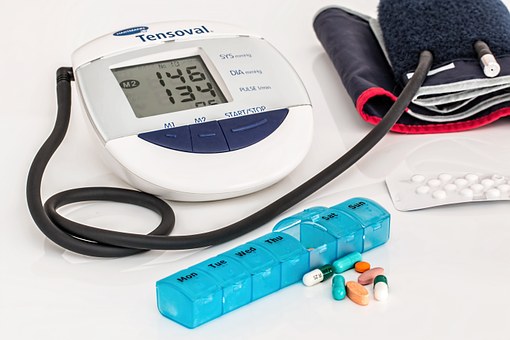When your blood pressure readings are above 140/90mmHg, physicians will interpret it as high blood pressure or hypertension. The numerator value is referred to as the systolic pressure while the denominator is the diastolic pressure. If not controlled hypertension can lead to heart diseases such as coronary heart diseases, atherosclerosis, congestive heart failure and related complications such as stroke cardiac failure and even sudden death. Discussed here are ways of mitigating high blood pressure without medication.
Exercise regularly
Regular workouts can bring your blood pressure to manageable levels. Anything to do with three to five workouts per week is quite good. Besides, the workouts should last at least 30 minutes each day. The types of exercises you can choose from include aerobic also referred to as cardio workouts such as jogging, strength training such as weight lifting, stretching and balance exercises. Whichever the activity you get to choose to remember to consult with your physician particularly on the intensity of the workouts.
Exercise is vital to the building of muscles, for arterial health and to burn stored fat to keep you at an ideal weight. It also reduces your body weight hence reducing the high risks of hypertension. Being consistent is the key for successful exercising, and it will keep your blood pressure healthy.
Eat a healthy diet
A diet high in fiber, fresh fruits, and vegetables, cereals and pulses are associated with decreased risks of developing hypertension. You should avoid the following, deep-fried food, saturated fat, high-fat dairy product and other highly refined and processed food. Three to five medium-sized fruit a day, three to five servings of vegetables a sufficient to deliver nutrients, antioxidant, fibers, Phytochemicals which are beneficial compounds for a healthy cardiovascular system.
Reduce sodium in your diet
A small reduction of sodium in your food can do great to your health and can reduce your blood pressure by about 5 mg Hg. The effect of sodium intake on blood pressure varies differently from one person to another. You should, however, lower sodium intake to 1,500 mg a day or less.
You can achieve this by eating fewer or no processed foods as they contain sodium. Read carefully on the food labels when buying and choose the low sodium foods and beverages or emphasize on whole natural foods. Also, do not add salt to your diet instead you can use natural spices and herbs for flavor.
Alcohol Intake
Taking too much of alcohol is associated with an increased risk of developing high blood pressure. Alcohol can damage the arteries which consequently will lead to hypertension. It is, therefore, recommended to drink in moderation, that means women should have one drink a day while men should take two drinks per day. A drink is equivalent to 5 ounces of wine, 12 ounces of a bear.
Quit smoking
Smoking makes your blood vessels narrow increasing resistance to the flow of blood which in the long ran raises blood pressure. Also, smoking reduces the amount of oxygen in your blood which makes your heart to pump faster to compensate which may lead to hypertension. Therefore, cutting down on the number of cigarettes can reduce blood pressure.
Manage stress
Stressing times stimulates the body to produce a stress hormone called cortisol. This hormone in a series of complex reactions raises blood pressure. There are different ways to managing stress like taking a break from your daily activity, relaxing in quiet places, doing recreational activities like swimming among others.
Monitor your blood pressure at home and see your doctor regularly
It is essential to practice home monitoring; it can help you keep your health on the cheek. Hypertension monitors are all over and with no prescription. See your doctor and talk about home monitoring before you making any move.
Conclusion
As aforementioned, regular exercises and the healthy diet will lower the levels of hypertension. You should avoid taking too much sodium, excess alcohol taking, smoking and also stress related situations. Consider practicing home monitoring, joining a supportive team and visiting doctor regularly.


